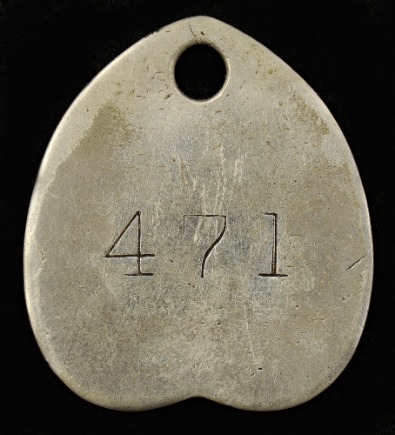
The weighted average is generally the least common cost flow assumption for manufacturers. In fact, the IRS previously dismissed this method as inaccurate, only allowing businesses to use it for tax purposes in 2008. With numerous options available, selecting the right manufacturing accounting software package can be a daunting task. Moreover, the cost of such software can be substantial, making it crucial to make an informed investment decision. reduce inventory loss This is a common accounting method that uses a weighted average of all products to determine and track inventory.
Material costs cover all the inventory stock items that go into a finished product. This includes raw materials, parts, and components – and also consumables like screws and adhesives. In addition, there are also indirect costs that must be managed within a manufacturing business, such as insurance premiums and daily office expenses. Manufacturing budgets also require business owners to compartmentalize their budgeting plans for each stage of the production process. This ensures the business stays on track by assigning the appropriate sales prices for the products. Budgeting processes in factories and other industries rely considerably on historical data and production expenses to help managers make an informed estimate for future budgets.
Your manufacturing accounting software should also help you keep compliant with regulations and the tax laws of the countries you have a business in. Often, manufacturers invest in an all-in-one solution, which handles other tasks away from finances, such as planning and production. Ideally, data should move freely between production lines and the back office, meaning you have accurate real-time data.
Direct Labor Manufacturing Account
Standard costing enables manufacturers to follow through with the production process based on a set standard which can later be reassessed based on the variance they calculate by zeroing in on each stage of production. Identifying the margin of profit you earn on the products your business creates and sells is an important part of manufacturing accounting. Margin analysis often involves tracking and accounting for all the costs involved in the production and then subtracting those costs from the total value those steps generate. Standard costing is one of the most common production costing methods among manufacturers. It involves calculating a standard rate for groups of costs that go into each unit, including direct materials, direct labor, and manufacturing overhead. The value of inventories plays a large role in a company’s finances and profitability, as it directly affects both COGM, COGS, and tax liability.
Cost of Goods Sold Manufacturing Account
Target costing also allows businesses to foresee products that might not quite make the cut and discontinue them to capitalize on those that perform better. Despite its advantages, target costing requires constant monitoring of market trends and other parameters to remain rooted. All manufacturers create budgets that they adhere to when running their business during a defined fiscal period. Direct labor includes the cost of workers who transform raw materials into finished goods. The wages of the worker who assembles the tables are direct labor, but not the salary of the janitor who keeps your factory clean. It helps facilitate analysis and efficiency refinement for businesses that revolve less around each unit and more around repetitive procedures.
Your cost of goods manufactured includes all direct and indirect costs that go into the products you finish producing during an accounting period. Like the cost of goods sold, it generally refers to direct materials, direct labor, and manufacturing overhead. The income statements of merchandising companies differ from those of manufacturing companies in several areas.
Manufacturing Accounting: A Guide for Manufacturers
- This method is by far the most common method used in manufacturing businesses to accurately estimate their costs.
- Of the total raw materials placed in production for the year, $12,000 was for indirect materials and must be deducted to find direct materials placed in production.
- We follow strict ethical journalism practices, which includes presenting unbiased information and citing reliable, attributed resources.
- Standard costing is useful if you are making similar products or large quantities of a specific product.
The former chief executive, Martin Grass, was sentenced to eight years in prison and the former chief financial officer, Franklyn Bergonzi, was sentenced to 28 months in prison. In 2002, the Securities and Exchange Commission (SEC) filed accounting fraud charges against several former executives of Rite Aid. The SEC complaint alleged that Rite Aid had significantly overstated income for several years. Contract manufacturing is the outsourcing of certain manufacturing jobs to another (third-party) company. For example, a smartphone manufacturer might outsource the audio components to a speaker manufacturing specialist. FundKite can approve you in as little as 2 business hours for up to $2,000,000 when we are able to obtain your business data and verify your bank account.
Would you prefer to work with a financial professional remotely or in-person?

Since physical inventory counts are time-consuming, few companies do them more than once a quarter or year. In the meantime, the inventory account in the accounting system continues to show the cost of the inventory that was recorded as of the last physical inventory count. This means that the inventory valuation in the accounting records will be inaccurate, except when a physical count is performed. A manufacturing company reports depreciation as a separate item in the income statement after the cost of goods sold. The amount of depreciation is deducted from the gross profit to arrive at the net profit before tax. Of the total raw materials placed in production for the year, $12,000 was for here are 10 financial terms everyone should know indirect materials and must be deducted to find direct materials placed in production.
Your cost of goods sold and ending inventory values play a significant role in your manufacturing business’s profitability. Because that directly affects your tax liability, the IRS requires that you use specific methods to calculate both numbers. However, manufacturing accounting software can automate a significant portion of this responsibility. You or an accountant should still perform reconciliations to confirm why and how auditors assess internal controls the accuracy of your financial records, but it’s much easier than doing everything by hand.
Look at where the inefficiencies are in the production process and where the waste is coming from, adjusting the pricing if required. Standard costing is useful if you are making similar products or large quantities of a specific product. To reduce the costs of doing business, you must understand first where your production costs lie. This information helps companies arrive at better decisions about when to buy materials and sell products. The cost of goods sold Manufacturing account tracks information on all inventory items sold by the firm.